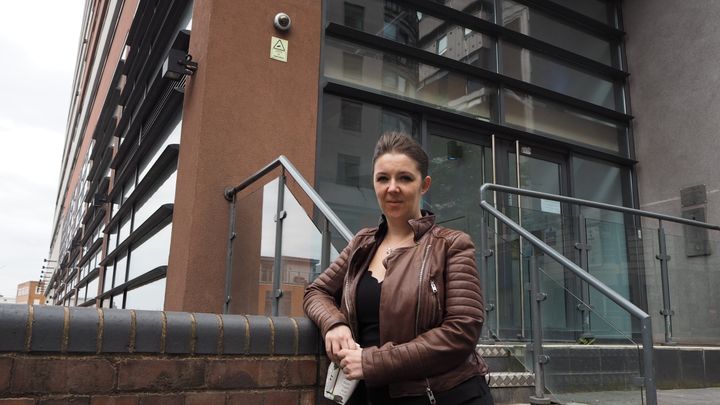
Get the latest on coronavirus. Sign up to the Daily Brief for news, explainers, how-tos, opinion and more.
Thousands of people living in high-rise blocks covered in dangerous cladding are facing “astronomical” hikes to insurance premiums as official figures show the removal of the flammable material remains at a virtual standstill because of the coronavirus outbreak.
At the Brindley House tower block in Birmingham, flat owners have this year seen their joint insurance annual bill swell to 11 times its original cost in the aftermath of the Grenfell Tower disaster three years ago.
If residents in the city’s tallest building, a 182-flat mix of private and social housing, accepted the quote they would have to pay more than £2,500 per home on insurance alone.
The bill, now close to £500,000 for the building, comes after a string of other costs caused entirely by changes in the aftermath of Grenfell. Many now fear bankruptcy and losing their homes despite being blameless.
Campaigners argue the insurance industry is using the cladding crisis to boost its profits by lessening its exposure to a perceived risk, but the sector contends it has to change its calculations as more materials are found to be “unfit for purpose”.
The UK Cladding Action Group (UKCAG) has told HuffPost UK the surge in insurance premiums is “widespread”, with standalone buildings without group cover seeing the charge rise.
Meanwhile, efforts to remove dangerous cladding are largely in stasis, despite the government committing £1.6bn to carry out work on all affected buildings because of the stalemate between the state, building owners and developers over who should pay for remediation.
Official figures published today show 307 high rises are still covered in the material blamed for the spread of the Grenfell inferno. In April, as the UK was in lockdown, aluminium composite material (ACM) cladding was taken off just five buildings in England above 18 metres.
The total number of buildings in line for repair is significantly higher since the government’s fund will pay for the removal and replacement of all unsafe cladding on high-rise buildings, not just ACM. Estimates suggest 500,000 people are living in homes with flammable cladding or insulation.
Brindley House is thought to be facing the country’s highest insurance charge, but the eye-watering premium is not unique among buildings with cladding. According to UKCAG, the spike at the Decks in Runcorn is slated as £124,000, taking the cost to £254,000. The cost at Altitude 25 in Croydon could double to £200,000 and Islington Gates, also in Birmingham, faces a £160,000 increase to £190,000.
Brindley House, built in the 1970s and managed by flat owners for the last four years, is currently uninsured. It puts leaseholders in breach of mortgage and lease agreements and, in theory, they could face eviction despite the cladding issues not being their fault.
The cost of the insurance comes as the bill to remove the defective insulation and cladding could be between £5m and £10m. Other costs include £180,000 a year for a “waking watch”, the 24-hour fire patrols that are now common among dangerously clad buildings.
Since the developer of the building has gone bust, residents will be relying on the government fund to remediate the defective material. The scheme, however, is yet to open to applications.
Michelle Henry, one of the residents who sits on the board of directors at Brindley House, says the Covid-19 crisis has added to their burden since some residents are furloughed or have lost their jobs. But the pandemic might also buy them time to get the many issues resolved as all industries face a slowdown.
Her signwriting business has effectively been mothballed by coronavirus – as has her plan to move to New Zealand with her husband – and working on Brindley House “has become a full-time job in itself”.
She told HuffPost UK: “I have spoken to other leaseholders who are at breaking point. Worrying about the financial implications is causing them sleepless nights. I have even had one mention that they don’t think life is worth living any more. What do you say to that?”

Infographic supplied by Statista.
Earlier this month, HuffPost UK reported that the government cash does not cover the temporary fire safety measures those in dangerous buildings have been forced to implement just to stay in their homes.
The most common measure is 24-hour fire wardens, or round-the-clock waking watches. Freedom of Information requests showed at least 380 blocks of flats have watches in place, costing some people as much as £840 a month.
The Grenfell disaster, where 72 people were killed, and the subsequent focus on inadequate fire safety have revealed other defects that blameless owners of flats are having to pay for. They include inadequate fire breaks, timber balconies or walkways and defective fire doors.
A string of regional campaign groups have been formed to fight for dangerous cladding to be removed, including the BrumLAG, Manchester Cladiators and Leeds Cladding Scandal. They argue that the government should underwrite the cost of the growing number of faults, including the insurance increase, but fear the current size of the fund is inadequate. This week these victims of the building safety crisis paid tribute to those on the Covid-19 frontline in a video.
Insurers argue the rise in insurance costs for properties with combustible materials on the outside of the building is rational given the increased risk caused by the declaration that some materials are unfit for purpose.
An Association of British Insurers spokesperson said: “Insurers understand that this a difficult and stressful time for residents.
“Insurers continue to insure high-rise buildings with inappropriate cladding and other combustible material on and work with their building owners to ensure alternative fire risk measures are in place until remediation happens.”
The Ministry for Housing, Communities and Local Government has been asked to comment.
